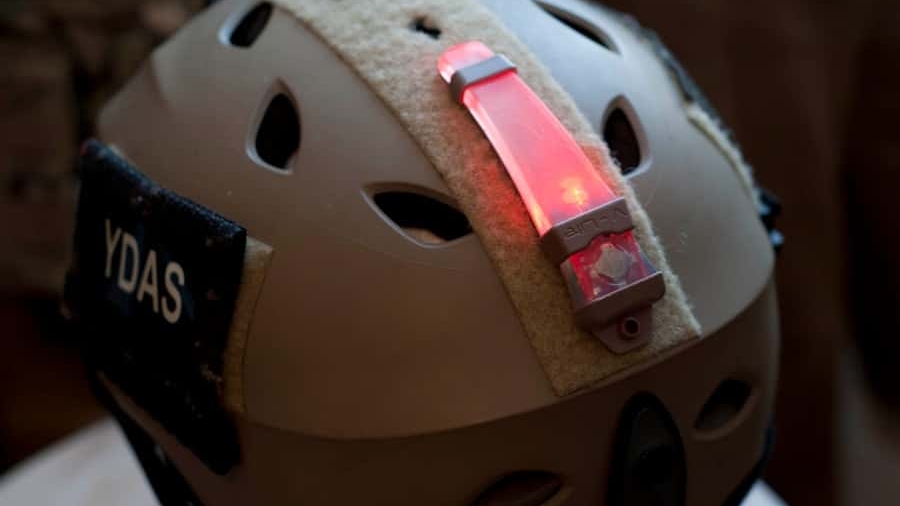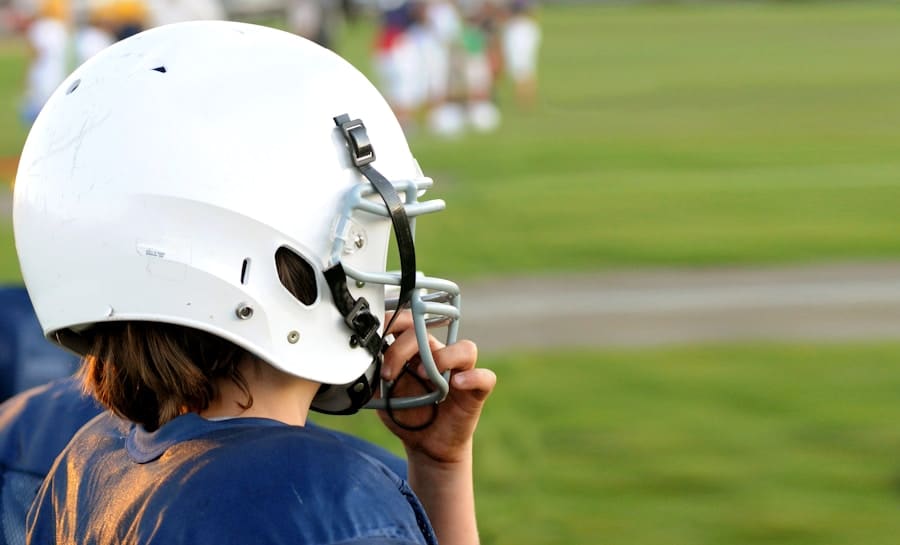In recent years, the evolution of technology has permeated various aspects of our lives, and sports safety is no exception. Smart helmets have emerged as a groundbreaking innovation designed to enhance the safety of athletes across multiple disciplines. These helmets are not merely protective gear; they are sophisticated devices equipped with sensors and connectivity features that monitor the wearer’s condition in real-time.
The integration of technology into traditional sports equipment represents a significant shift in how we approach athlete safety, particularly in high-impact sports such as football, cycling, and skiing. The concept of smart helmets is rooted in the need to address the growing concerns surrounding head injuries, particularly concussions. With increasing awareness of the long-term effects of traumatic brain injuries, sports organizations, coaches, and parents are seeking solutions that can provide immediate feedback on an athlete’s health status.
Smart helmets are designed to fill this gap by offering features such as impact detection, communication capabilities, and data analytics, all aimed at ensuring that athletes can perform safely while minimizing the risk of injury.
Key Takeaways
- Smart helmets are a revolutionary technology designed to enhance sports safety by providing real-time impact detection and analysis.
- Sports safety is crucial for preventing head injuries and long-term health issues, making smart helmets an important tool for athletes and sports enthusiasts.
- Smart helmets work by integrating sensors and advanced technology to detect and analyze impacts, providing immediate feedback to the user and coaches.
- Impact detection technology in smart helmets can accurately measure the force and location of impacts, allowing for quick assessment and response to potential injuries.
- The advantages of smart helmets in sports safety include real-time monitoring, injury prevention, and improved performance, but there are also limitations and challenges to consider.
The Importance of Sports Safety
The significance of sports safety cannot be overstated, especially in an era where participation in contact sports is on the rise. Athletes, regardless of age or skill level, face inherent risks when engaging in physical activities that involve speed, strength, and potential collisions. The consequences of neglecting safety measures can be dire, leading to severe injuries that may have lasting effects on an athlete’s health and career.
This reality has prompted a collective effort among sports organizations, medical professionals, and technology developers to prioritize safety protocols and equipment.
Research indicates that repeated head injuries can lead to chronic traumatic encephalopathy (CTE), a degenerative brain condition associated with cognitive decline and emotional disturbances.
As awareness of these risks grows, so does the demand for innovative solutions that can help mitigate them. Smart helmets represent a proactive approach to this challenge, providing athletes with tools that not only protect them during play but also monitor their well-being in real-time.
How Smart Helmets Work
Smart helmets are equipped with an array of advanced technologies that work together to enhance athlete safety. At their core, these helmets utilize sensors to detect impacts and monitor various physiological parameters. For instance, accelerometers and gyroscopes are commonly integrated into the helmet’s design to measure the force and direction of impacts sustained during play.
This data is crucial for assessing whether an athlete has experienced a significant blow to the head that could warrant further evaluation. In addition to impact detection, many smart helmets feature connectivity options that allow them to communicate with smartphones or other devices. This connectivity enables real-time data transmission, allowing coaches and medical personnel to receive immediate alerts if an athlete experiences a dangerous level of impact.
Some models even incorporate GPS technology to track an athlete’s movements on the field or track, providing valuable insights into their performance and potential areas for improvement. The combination of these technologies creates a comprehensive safety net for athletes, ensuring that they are monitored continuously during their activities.
Impact Detection Technology
Impact detection technology is one of the most critical components of smart helmets, as it directly addresses the risk of head injuries in sports. The sensors embedded within these helmets are designed to measure various parameters related to impacts, including acceleration, rotational forces, and impact location. When an athlete experiences a hit, the helmet’s sensors collect data that can be analyzed to determine the severity of the impact.
For example, some smart helmets utilize machine learning algorithms to assess the data collected from impacts over time. By analyzing patterns in the data, these algorithms can identify trends that may indicate an increased risk of injury for specific athletes or during particular types of plays. This predictive capability allows coaches and medical staff to make informed decisions about when an athlete should be removed from play for further evaluation or rest.
Furthermore, this technology can contribute to developing better training protocols aimed at reducing the likelihood of head injuries in the first place.
Advantages of Smart Helmets in Sports Safety
The advantages of smart helmets extend beyond mere impact detection; they encompass a holistic approach to athlete safety and performance enhancement. One significant benefit is the ability to provide immediate feedback on an athlete’s condition. In traditional settings, coaches and trainers often rely on subjective assessments or anecdotal evidence to determine whether an athlete is fit to continue playing after a potential head injury.
Smart helmets eliminate much of this uncertainty by delivering real-time data that can inform decision-making processes. Moreover, smart helmets can foster a culture of safety within sports teams and organizations. By prioritizing the use of advanced protective gear like smart helmets, teams signal their commitment to athlete welfare.
This proactive stance can encourage athletes to report injuries more openly without fear of being sidelined or perceived as weak. Additionally, the data collected from smart helmets can contribute to broader research efforts aimed at understanding head injuries in sports better. By aggregating data from multiple athletes over time, researchers can identify trends and develop strategies for injury prevention that benefit the entire sporting community.
Limitations and Challenges
Despite their numerous advantages, smart helmets are not without limitations and challenges that must be addressed for widespread adoption. One significant concern is the cost associated with these advanced helmets. While traditional helmets are relatively affordable, smart helmets often come with a higher price tag due to their sophisticated technology.
This cost barrier can be prohibitive for many amateur athletes or teams operating on tight budgets, potentially limiting access to this life-saving technology. Another challenge lies in the integration of smart helmets into existing sports protocols and regulations. Many sports organizations have established guidelines regarding equipment standards, and introducing new technology requires careful consideration of how it fits within these frameworks.
Additionally, there may be resistance from some athletes or coaches who are skeptical about relying on technology for safety assessments. Overcoming these hurdles will require collaboration between manufacturers, sports organizations, and medical professionals to ensure that smart helmets are embraced as essential tools for enhancing athlete safety.
Case Studies and Success Stories
Several case studies highlight the successful implementation of smart helmets in various sports settings, showcasing their potential to improve safety outcomes for athletes. One notable example is the use of smart helmets in youth football leagues across the United States. Organizations like the NFL’s Play Smart Play Safe initiative have partnered with helmet manufacturers to provide young athletes with access to smart helmet technology.
These initiatives have not only raised awareness about concussion risks but have also equipped young players with tools that help monitor their health during games and practices. In professional sports, teams such as the NFL’s San Francisco 49ers have adopted smart helmet technology as part of their player safety protocols. By utilizing helmets equipped with impact detection systems, medical staff can receive real-time alerts about players who may have sustained significant hits during games.
This proactive approach has led to improved decision-making regarding player health and has contributed to a culture of safety within the organization. These success stories illustrate how smart helmets can be effectively integrated into existing sports frameworks while enhancing athlete safety.
The Future of Smart Helmets in Sports Safety
Looking ahead, the future of smart helmets in sports safety appears promising as technology continues to advance at a rapid pace. Innovations such as artificial intelligence and machine learning are expected to play increasingly significant roles in refining impact detection algorithms and enhancing data analytics capabilities. As these technologies evolve, smart helmets will likely become even more adept at predicting injury risks based on individual athlete profiles and historical data.
Furthermore, as awareness about head injuries grows among athletes, coaches, and parents alike, there will likely be increased demand for smart helmet technology across various sports disciplines. Manufacturers will need to focus on making these helmets more accessible by addressing cost concerns while ensuring they meet rigorous safety standards. Collaboration between technology developers, sports organizations, and medical professionals will be essential in shaping the future landscape of athlete safety equipment.
In conclusion, smart helmets represent a transformative advancement in sports safety technology that has the potential to revolutionize how we protect athletes from head injuries. By combining cutting-edge impact detection technology with real-time monitoring capabilities, these helmets offer a proactive approach to ensuring player welfare while fostering a culture of safety within sports communities. As we move forward into an era where technology plays an increasingly vital role in our lives, smart helmets will undoubtedly become integral components of athlete safety protocols across all levels of competition.
The article “Top 10 Best Scheduling Software for 2023: Streamline Your Schedule Effortlessly” provides valuable insights into how technology can enhance efficiency and organization in various aspects of life, including sports. By utilizing smart helmets equipped with impact detection technology, teams and athletes can better manage their schedules and training sessions while prioritizing safety. This integration of technology not only improves performance but also ensures the well-being of athletes. To learn more about the latest advancements in wearable technology, check out this review of Samsung smartwatches. Additionally, for more tech news and updates, visit Recode, a technology news website owned by Vox Media. Source
FAQs
What is a smart helmet?
A smart helmet is a type of helmet that is equipped with technology such as sensors, accelerometers, and communication systems to provide additional safety features and functionality.
How do smart helmets improve sports safety?
Smart helmets can improve sports safety by providing impact detection and alert systems that can help identify potential head injuries and prompt medical attention. They can also offer features such as GPS tracking and communication capabilities for added safety.
What sports can benefit from smart helmets?
Sports such as football, cycling, skiing, snowboarding, and motorcycling can benefit from the use of smart helmets to enhance safety and provide impact detection.
How do smart helmets detect impacts?
Smart helmets use sensors and accelerometers to detect sudden changes in motion and impact forces. When a significant impact is detected, the helmet can trigger an alert or notification to the user or a designated contact.
What are the potential benefits of using smart helmets in sports?
The potential benefits of using smart helmets in sports include improved safety through impact detection, real-time monitoring of head injuries, and the ability to track and communicate with other users or emergency services in the event of an accident.



